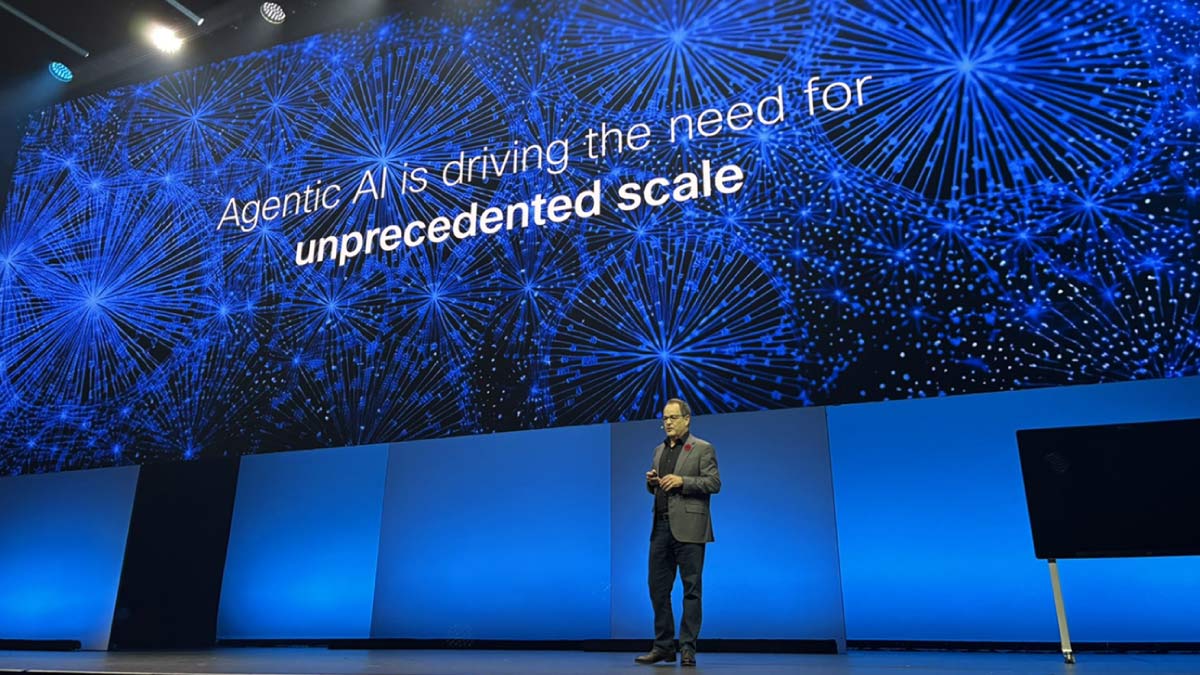By Adam MacHale, Vice President, Service Provider - Europe, Middle East & Africa
From hybrid work and Internet of Things to sustainability and cyber threats, there’s no shortage of massive technology forces reshaping our world today. And businesses must adapt faster than ever before.
Service providers are no exception. But despite these challenges and others — including a continuing upsurge in network demand — the opportunities for service providers are huge. Because by evolving themselves, telcos can support nearly all businesses and industries in their own transformation journeys.
Beyond the business world, telcos can play a key role in global transformation. By connecting more people around the world, they can help close the digital divide and spur growth and opportunity in underserved regions.
Today, opportunity doesn’t have to be limited by geography. Connectivity enables people to share or develop their talents from anywhere in the world.
If, that is, they are connected, because we all depend on service providers as never before — for fast, secure, low-latency networks that meet whatever demands we place on them, from wherever we happen to be.
The good news is that many service providers have made big investments in high-speed fiber and other technologies. Those enabled them to cope with huge spikes in video traffic during the pandemic-driven lockdowns. But to meet continuing challenges —internet traffic rose 29 percent in 2022 — new innovations will be essential. Along with new technologies and strategies that will help level the playing field for the global economy.
Bringing it all together
Service providers are brilliantly positioned to bring all this together.
Advanced networking technologies, coupled with technologies like AI and machine learning, can uplevel security while optimizing the flow of network traffic and greatly reducing slowdowns or outages. SPs can further contribute to security at home or in the office, with cloud-based, easy-to-adopt packages built on service-level agreements. And because call and video quality must be flawless across any number of networks — whether 4G, 5G fiber, or WiFi, whenever and wherever — service providers can support seamless handoffs from network to network.
The in-office experience can be transformed with technologies like AI and Internet of Things (IoT), enabling a more immersive, collaborative, and energy-efficient environment, all of which demand the foundational support of SPs.
And speaking of 5G and IoT, service providers have a massive role to play there as well.
Smart buildings, factories, and farms, along with connected and autonomous vehicles, supply chain, and asset management in hospitals and retail, are just a few of the use cases enabled by IoT. But those massive amounts of end points, sensors, and smart devices need to be linked securely and with great reliability. In short, it’s a perfect application for 5G, with its high speed, wide bandwidth, and low latency.
A modernized transportation hub, like the Port of Rotterdam, represents a great case study. In such large-scale ports, sea, rail, air, and road transport all merge, and the transfer of goods and shipping needs to be choreographed to perfection. That demands rock solid, secure performance from network and mobile connections to tie together the myriad IoT sensors and devices sharing real-time information and data. Once again, SPs provide the critical foundation for success.
Connected vehicles represent a particularly large IoT/5G use case, with a massive potential business return for service providers. Predictive maintenance, remote analytics, in-car entertainment, traffic management, all can be supported by service providers over 5G. But they need to be prepared and ready to scale as the huge potential market expands.
Cisco already has 90 million connected cars on its platform, from the world’s top automotive brands. And we’re ready to continue partnering and innovating with service providers for the future. That is, a future that will include autonomous and ever more sophisticated connected vehicles, traffic-management, and safety systems.
Inclusive and sustainable
Cisco has a long, trusted relationship working with some of the world’s largest (and not so large) service providers. And we continue to innovate with technology that will meet and surpass the next wave of expectations on service providers, including for sustainable operations.
Cisco’s Silicon One chip powers the newest generation of switches and routers for mass-scale architecture, and it enables substantial increases in capabilities, while using much less energy. High-density routers powered with Silicon One, for example, consume 96 percent less energy than a previous generation, while supplying 35 percent more bandwidth. That’s great news in an industry that accounts for 2-3 percent of all global energy demand.
Combined with advances in optics, Silicon One also enables a new paradigm, routed optical networking. Along with great improvements in speed, bandwidth, and energy usage, it also lowers the economic barrier to entry, making powerful networking and mobility solutions available to more people around the world. Independent research by ACG Research found that routed optical networking can reduce operational costs and initial capital costs compared to traditional architectures, leading to an overall total cost of ownership that can be 46 percent lower.
Beyond economics, connecting more people across the planet demands new talent. Like most areas in technology, service providers face their own talent crunch. So, training the next-generation SP workforce is critical to our future.
That’s why I’m excited by the efforts of Cisco’s Networking Academy to train 10 million new workers over the next 10 years, with a special focus on developing regions like Africa. We’re also collaborating with the ITU to bring service providers on board with our global Digital Transformation Centers initiative, where we’ve trained 170,000 beneficiaries living in remote and underserved communities in 13 developing countries around the world since its inception in 2019. We believe that service providers unique expertise and resources can play a significant role in this effort.
The overarching goal is to share the specialized skills that will be needed as more and more innovative technologies enable a better, more connected future. By working together, we can bridge the digital divide and help create a global society in which all citizens can participate and thrive.
At Cisco, powering an inclusive future for all it all is our core purpose. And I believe our ongoing partnerships with service providers will be a big part of that vision, from supporting sustainability to closing the digital divide — while helping every organization to realize its own vision for the future.



